
Iron-Oxide Nanoparticle-Based Magnetic Resonance Contrast Agents
December 02, 2017
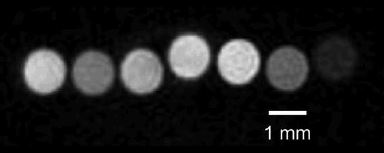
If you can't find it in your library, then please contact Ladislau Vekas, he can help you out.
Fast Magnetic Data Storage
October 15, 2017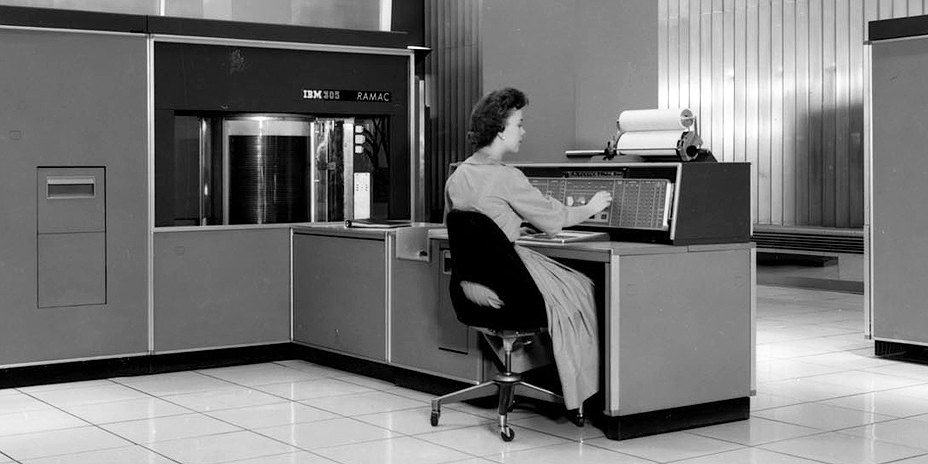 Magnetic data storage has long been considered too slow for use in the working memories of computers. Researchers at ETH have now investigated a technique by which magnetic data writing can be done considerably faster and using less energy. Instead of using a current-carrying coil producing a magnetic field to change the direction of magnetization they used an electric current passing through a specially coated semiconductor film. They found that the magnetization inversion happened in less than one nanosecond – considerably faster than in other recently studied techniques. In a first step, the researchers would now like to optimize their materials in order to make the inversion work even faster and at smaller currents.
Magnetic data storage has long been considered too slow for use in the working memories of computers. Researchers at ETH have now investigated a technique by which magnetic data writing can be done considerably faster and using less energy. Instead of using a current-carrying coil producing a magnetic field to change the direction of magnetization they used an electric current passing through a specially coated semiconductor film. They found that the magnetization inversion happened in less than one nanosecond – considerably faster than in other recently studied techniques. In a first step, the researchers would now like to optimize their materials in order to make the inversion work even faster and at smaller currents.Frontiers in Biomagnetic Particles Meeting 2017 - Excellent as Always!
October 13, 2017
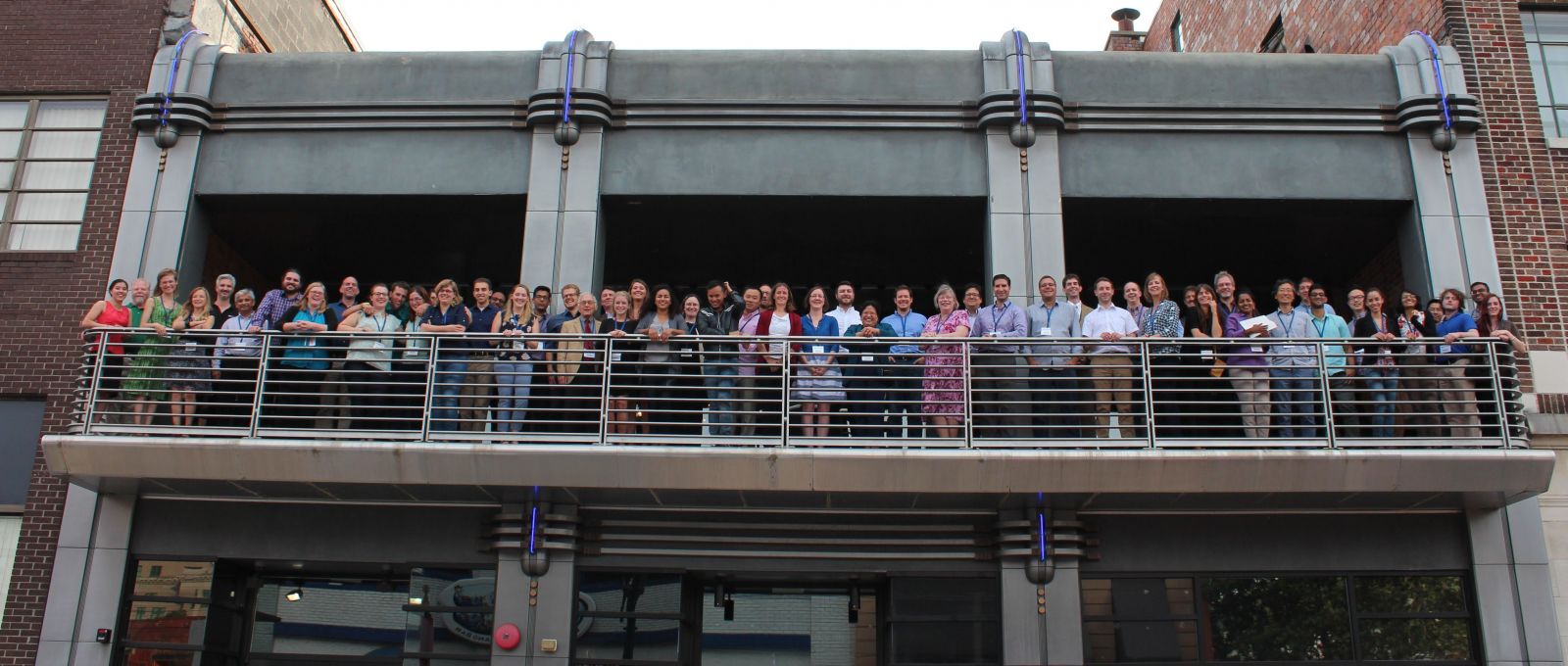
The 2017 meeting in Asheville, NC, was a great success. This would not be possible without the outstanding talks, posters, and discussions that you can go and check out in the attached abstract booklet here. But it also would not be possible without the energy of the organizers, Jennifer Andrew, Mark Bolding, Thompson Mefford, to again find a great meeting location, excellent invited speakers, and allow for pleasant information exchange and a chance for a good time together. Thank you all!
For more information, check out this website.
Successful 5th Colloquium of the DFG Priority Program 1681
October 09, 2017The 5th Colloquium of the DFG Priority Program 1681: Field controlled particle matrix interactions: synthesis multi-scale modelling and application of magnetic- hybrid materials was held in the Bavarian cloister Benediktbeuern from September 27-29, 2017. This colloquium is part of a special program of the German Research Foundation (DFG), that started in January 2014 and is focused on novel magnetic hybrid materials research. The research ranges from magnetic material production to technical and medical applications and includes modelling of field dependent interaction with different matrices. The large program benefits from the cross-specialization collaboration of chemists, physicist, engineers, biologists, and medics.
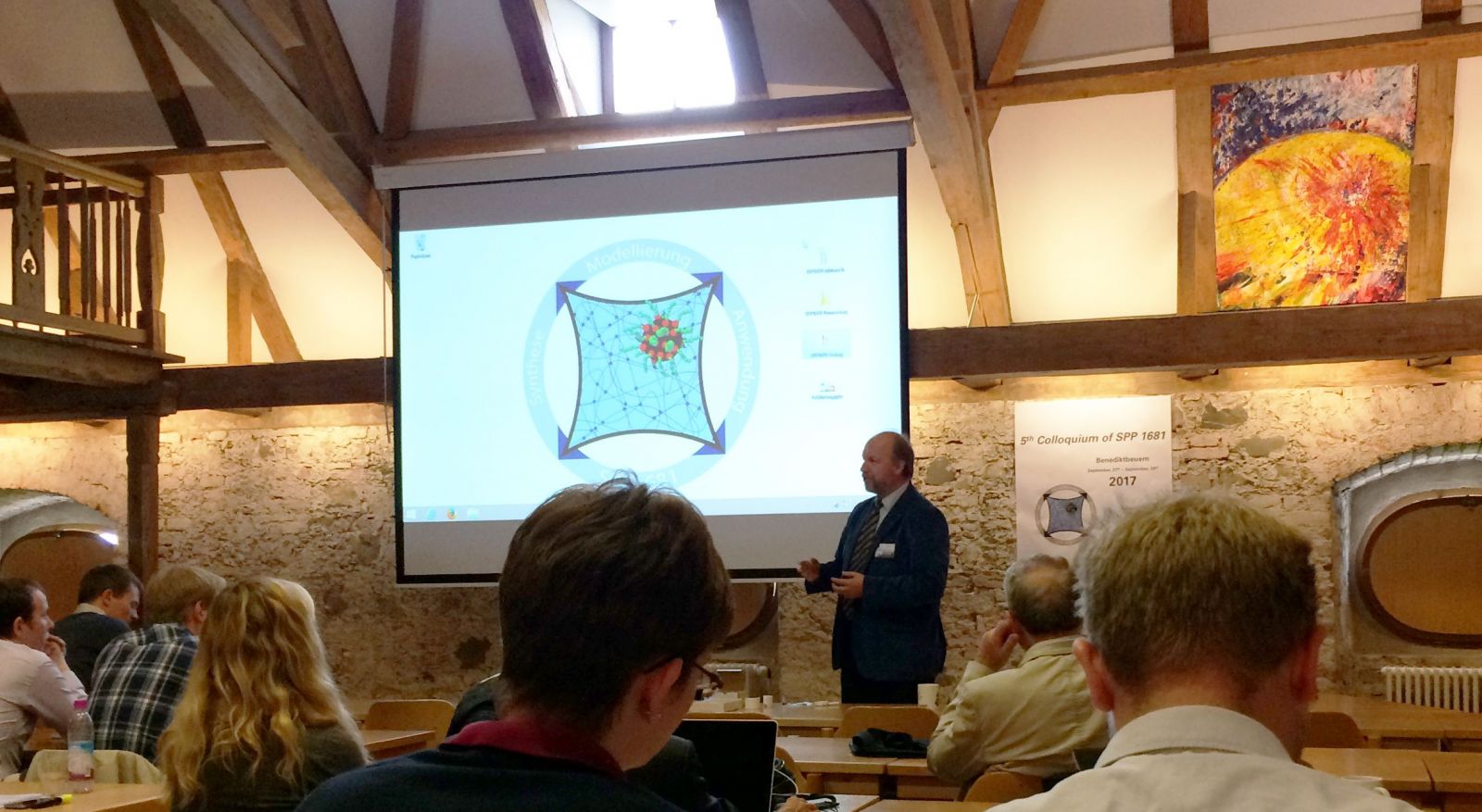 Almost 4 years after the start of the program, 86 scientists from each of the 31 projects in the program presented their most recent research findings in scientific talks and posters in the atmosphere of very history-charged walls. The highlight of the annual three-day meeting was, as always, a hiking tour in the mountains that culminates in scientific presentations being given in an alpine hut without any projection equipment. This year, the selected two speakers presented their recently finished dissertations on “Ferrogel actuators for bioapplications” (Emilia Wisotzki, Leipzig) and on “Particle motion investigation by Mössbauer spectroscopy” (Joachim Landers, Duisburg-Essen).
Almost 4 years after the start of the program, 86 scientists from each of the 31 projects in the program presented their most recent research findings in scientific talks and posters in the atmosphere of very history-charged walls. The highlight of the annual three-day meeting was, as always, a hiking tour in the mountains that culminates in scientific presentations being given in an alpine hut without any projection equipment. This year, the selected two speakers presented their recently finished dissertations on “Ferrogel actuators for bioapplications” (Emilia Wisotzki, Leipzig) and on “Particle motion investigation by Mössbauer spectroscopy” (Joachim Landers, Duisburg-Essen).
The next colloquium will take place at the end of September 2018, at which time 5 of the 6 years of the grant period will have elapsed. Planning future research in joint projects will then be in everybody's mind. For more information about this large German grant program, check out: http://www.magnetofluiddynamik.de/spp1681/index.php/willkommen
The Albus Award 2017 Goes to Anna Roig from ICMAB-CSIC
September 06, 2017
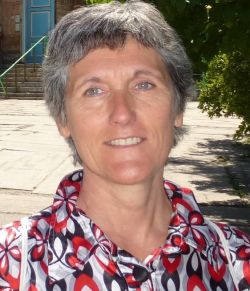 Congratulations to Prof. Anna Roig from the Group of Nanoparticles and Nanocomposites, Institut de Ciencia de Materials de Barcelona (ICMAB-CSIC) for obtaining and Albus Grifols Scientific Award.
Congratulations to Prof. Anna Roig from the Group of Nanoparticles and Nanocomposites, Institut de Ciencia de Materials de Barcelona (ICMAB-CSIC) for obtaining and Albus Grifols Scientific Award.
Magnetic Microcubes Dance in Magnetic Field
September 03, 2017
 A team of researchers including Koohee Han and Orlin D. Velev of North Carolina State University made polymer cubes with 10-µm-long edges and selectively coated one face of each cube with a 100-nm-thick film of cobalt, which can be magnetized. Then they formed aqueous suspensions of the microcubes and showed that by controlling the way magnetic fields were applied to the suspensions, including switching the fields on and off and superimposing fields from multiple electromagnets, the cubes could be made to spontaneously and reversibly assemble in a variety of shapes and patterns (Sci. Adv. 2017, DOI: 10.1126/sciadv.1701108). In some cases, the cubes reversibly switched between a linear chain and ringlike configuration. In others, the cubes underwent complex folding and unfolding.
A team of researchers including Koohee Han and Orlin D. Velev of North Carolina State University made polymer cubes with 10-µm-long edges and selectively coated one face of each cube with a 100-nm-thick film of cobalt, which can be magnetized. Then they formed aqueous suspensions of the microcubes and showed that by controlling the way magnetic fields were applied to the suspensions, including switching the fields on and off and superimposing fields from multiple electromagnets, the cubes could be made to spontaneously and reversibly assemble in a variety of shapes and patterns (Sci. Adv. 2017, DOI: 10.1126/sciadv.1701108). In some cases, the cubes reversibly switched between a linear chain and ringlike configuration. In others, the cubes underwent complex folding and unfolding.
Experimental Estimation of the Measured Loss Power of Magnetic Nanoparticles
July 27, 2017
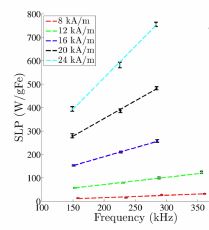
Robert Ivkov, Frederik Soetaert et al independently ascertained regions of data that adhere to the thermodynamic criteria, and yet even within these regions significant variability of measurement is observed. Variations within a single measurement actually exceed the variance among replicate measurements. Such variation within the measurements can be attributed to complex magnetohydrodynamic responses of the magnetic fluid and to heat transfer within the sample. Distinguishing between these effects is not possible without additional orthogonal measurements.
Check out this careful and important work for the magnetic hyperthermia community here. It was just published in the journal "Scientific Reports".
The Future of Transport is Magnetic
June 22, 2017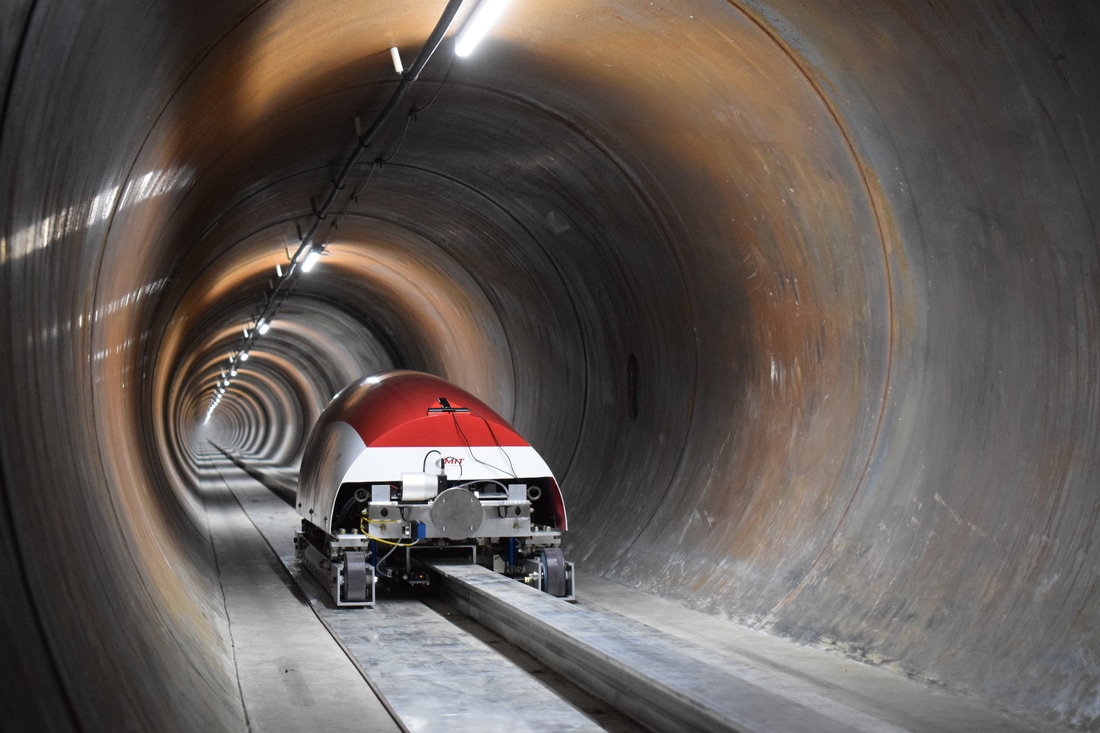 The idea of creating new high-speed mass transit systems is a hot topic for many scientists around the world. Spurred on by technology engineering entrepreneur, Elon Musk, the race is on to create pods that can transport passengers and cargo at high speeds. Musk, the founder and co-founder of several innovative companies including Tesla (premium electric cars), SolarCity (solar energy supply), and PayPal (online payment portal), has inaugurated the Hyperloop project with one of his companies, SpaceX. Although SpaceX was originally set up to explore aerospace manufacture and transport, with the ultimate goal of enabling colonization of other planets, Musk recognized that harnessing the expertise of aeronautical engineers could revolutionize ground transport, and so set up Hyperloop.
The idea of creating new high-speed mass transit systems is a hot topic for many scientists around the world. Spurred on by technology engineering entrepreneur, Elon Musk, the race is on to create pods that can transport passengers and cargo at high speeds. Musk, the founder and co-founder of several innovative companies including Tesla (premium electric cars), SolarCity (solar energy supply), and PayPal (online payment portal), has inaugurated the Hyperloop project with one of his companies, SpaceX. Although SpaceX was originally set up to explore aerospace manufacture and transport, with the ultimate goal of enabling colonization of other planets, Musk recognized that harnessing the expertise of aeronautical engineers could revolutionize ground transport, and so set up Hyperloop.For more information, check out our Archives.
September 2017
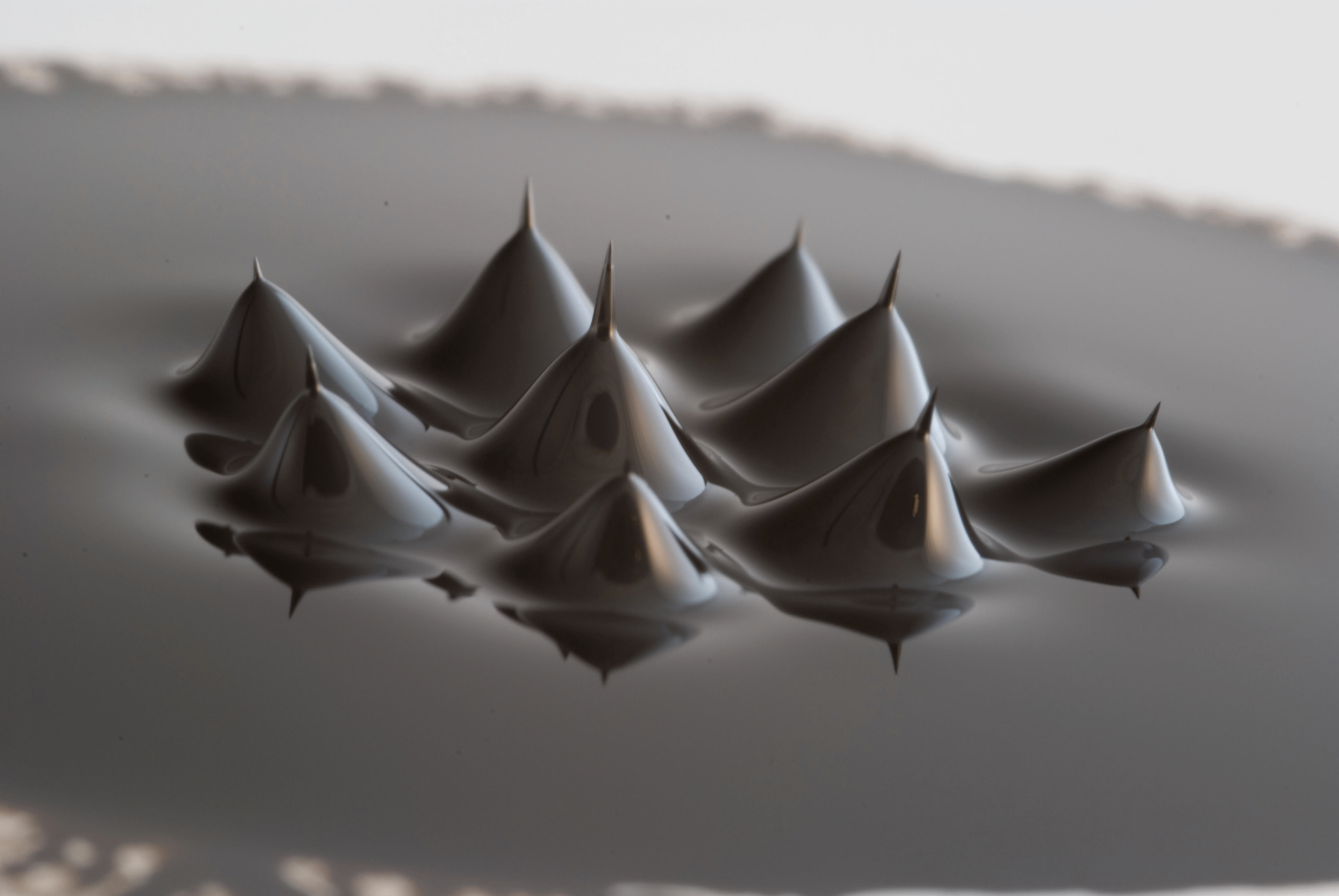
Search this site with the power of
